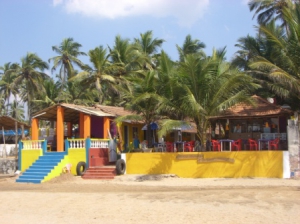 This is a tiny state in south west India which has a distinct culture dating back to its colonial past. It only became part of India when it gained independence from Portugal in 1961. Its Portuguese roots are still evident in Goan religion, cuisine, music, dress and language.
This is a tiny state in south west India which has a distinct culture dating back to its colonial past. It only became part of India when it gained independence from Portugal in 1961. Its Portuguese roots are still evident in Goan religion, cuisine, music, dress and language.
It has become very popular with tourists attracted by beautiful beaches, the party lifestyle, friendly locals and cheap package tours. However there is more to Goa than its Costa del India reputation. The countryside is dotted with colonial mansions dating from the prosperous 18th and 19th centuries where it is possible to get an insight into a bygone era.
Places of Interest:
PANAJI
Goa’s capital resembles a Mediterranean town. It has always been a port and was inhabited by the Portuguese when they arrived in 1510. In 1759, a series of epidemics in Old Goa led the Viceroy to move his residence to Panaji.
It is laid back and relaxed, with a strong colonial feel. It has lots of interesting churches like St. Sebastian’s Chapel built in 1888 which features a life-size crucifix that used to hang in the Palace of the Inquisition in Old Goa.
OLD GOA
A complex of cathedrals, monasteries and churches, it is now classified as a UNESCO World Heritage Site. It includes the magnificent Se Cathedral, considered Asia’s largest church and Basilica de Bom Jesus, revered by all Roman Catholics since it houses the remains of Francis Xavier, Goa’s patron saint.
BRAGANZA HOUSE
Goa’s grandest colonial mansion, built in the 17th century, 12 miles east of Margao. It is still occupied by the family but permission can be sought to view both wings by prior appointment.
BEACH LIFE
Beaches stretch for 66 miles and each has its own distinctive character and ambience. The ones in the south tend to be a little less developed. Lots of water sports and scuba diving, beach shacks selling ice cold beer and lively flea markets selling, all sorts! Lots of hawkers, lots of parties, lots of fun.







